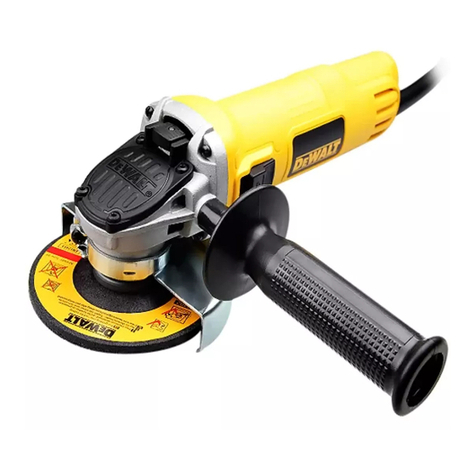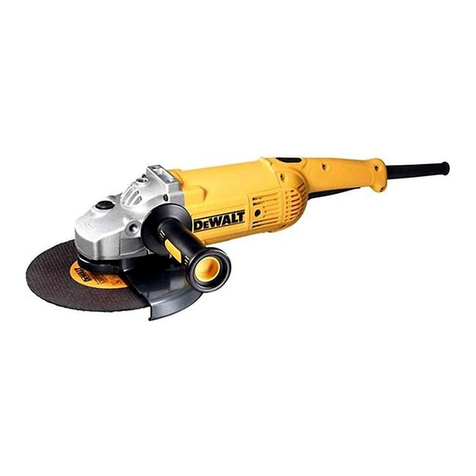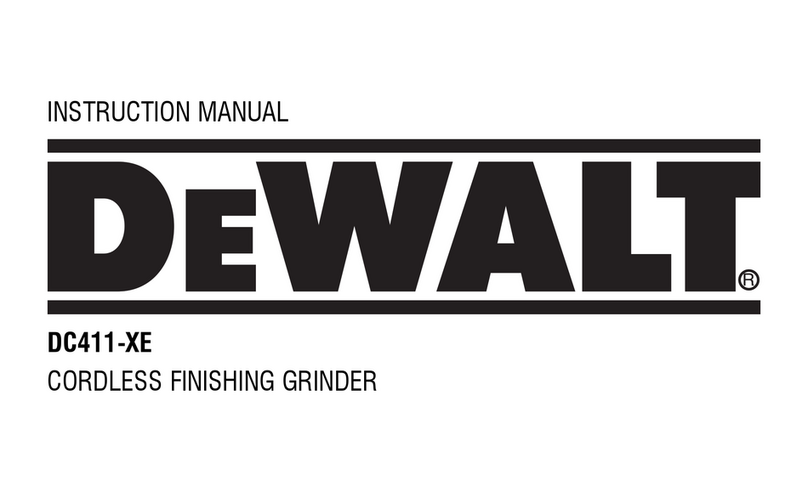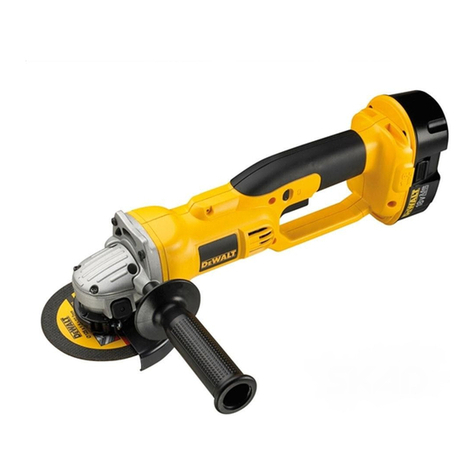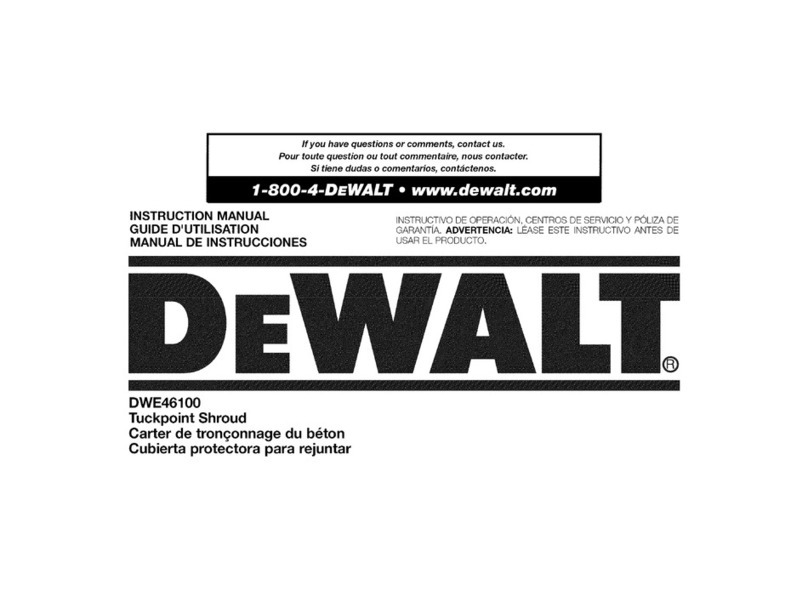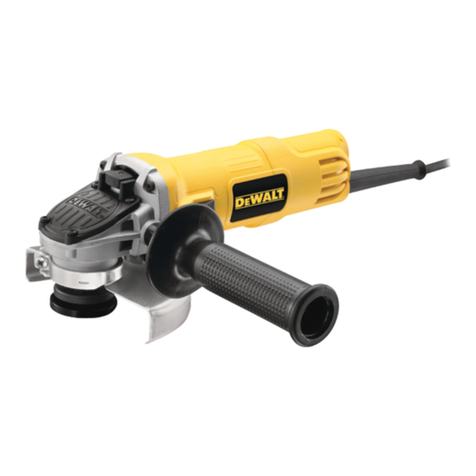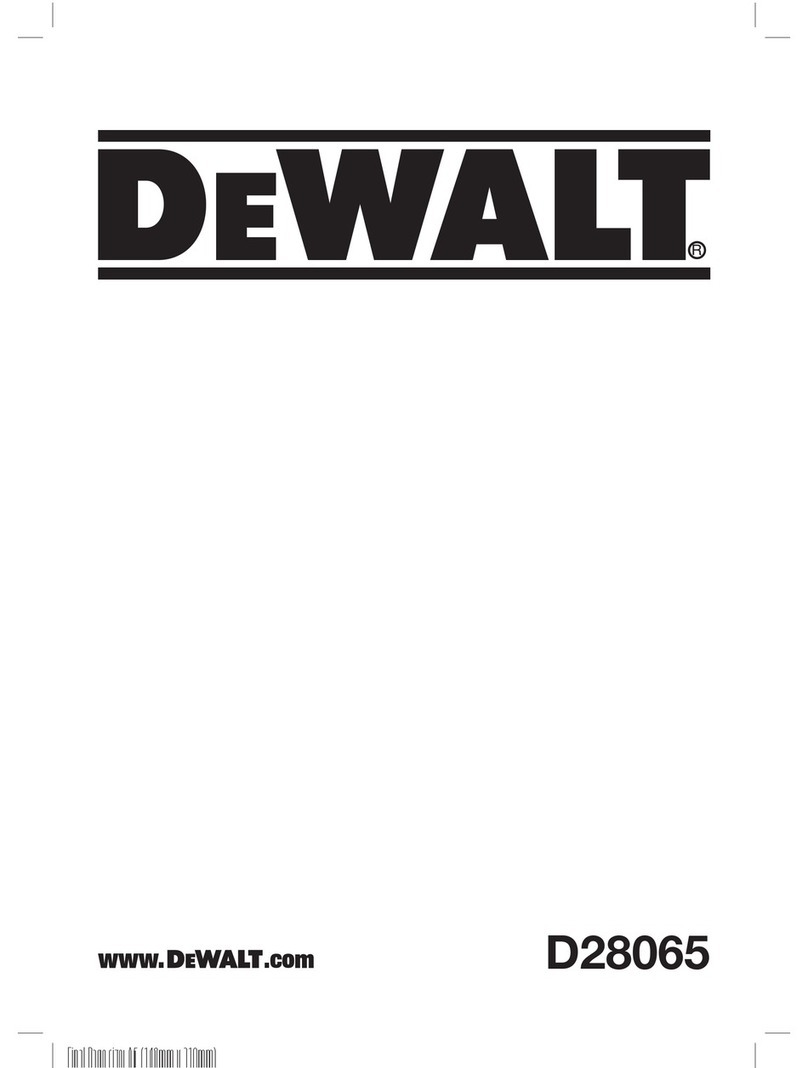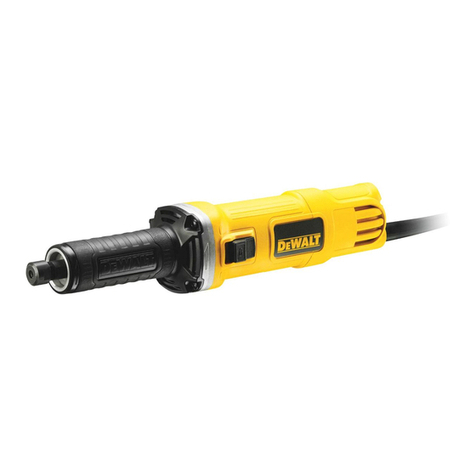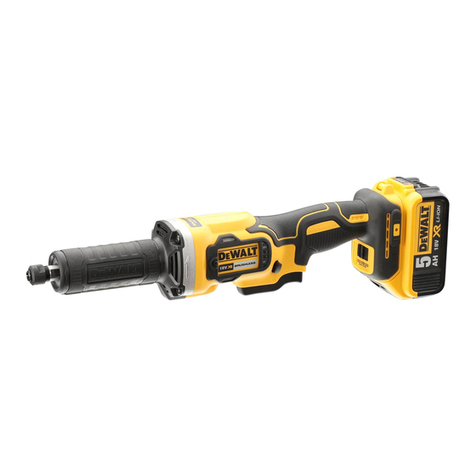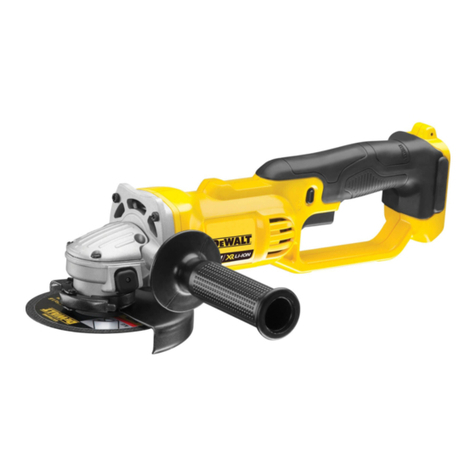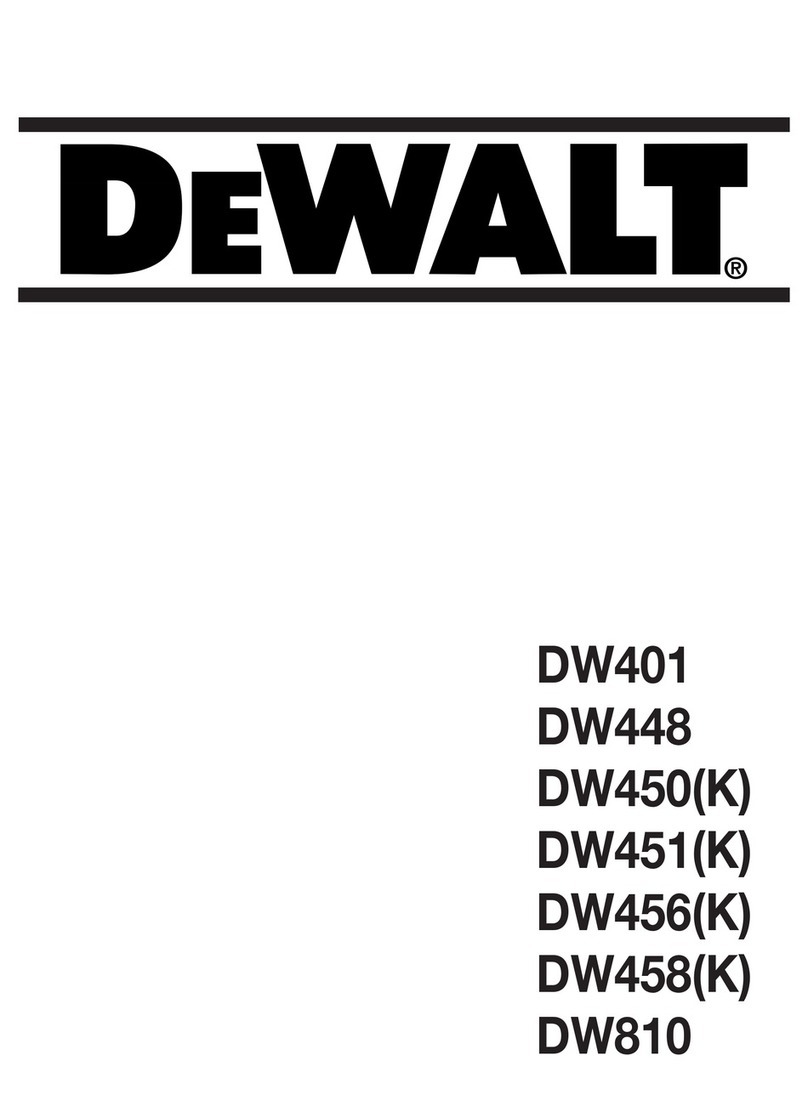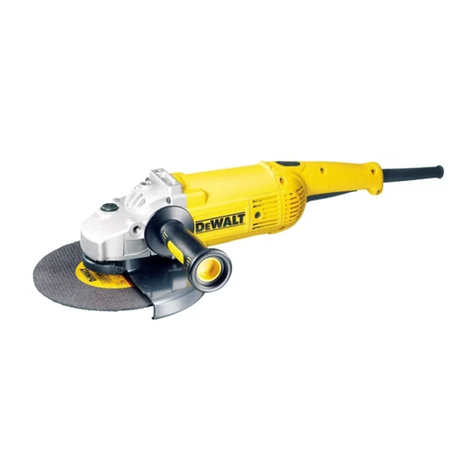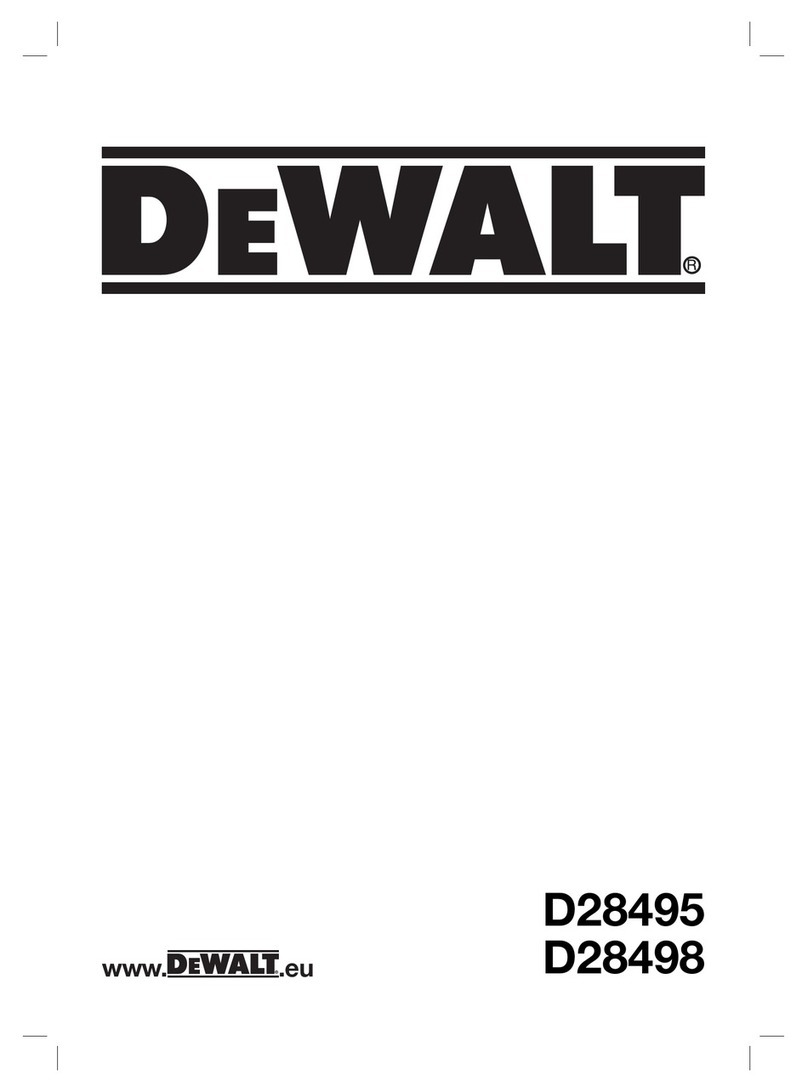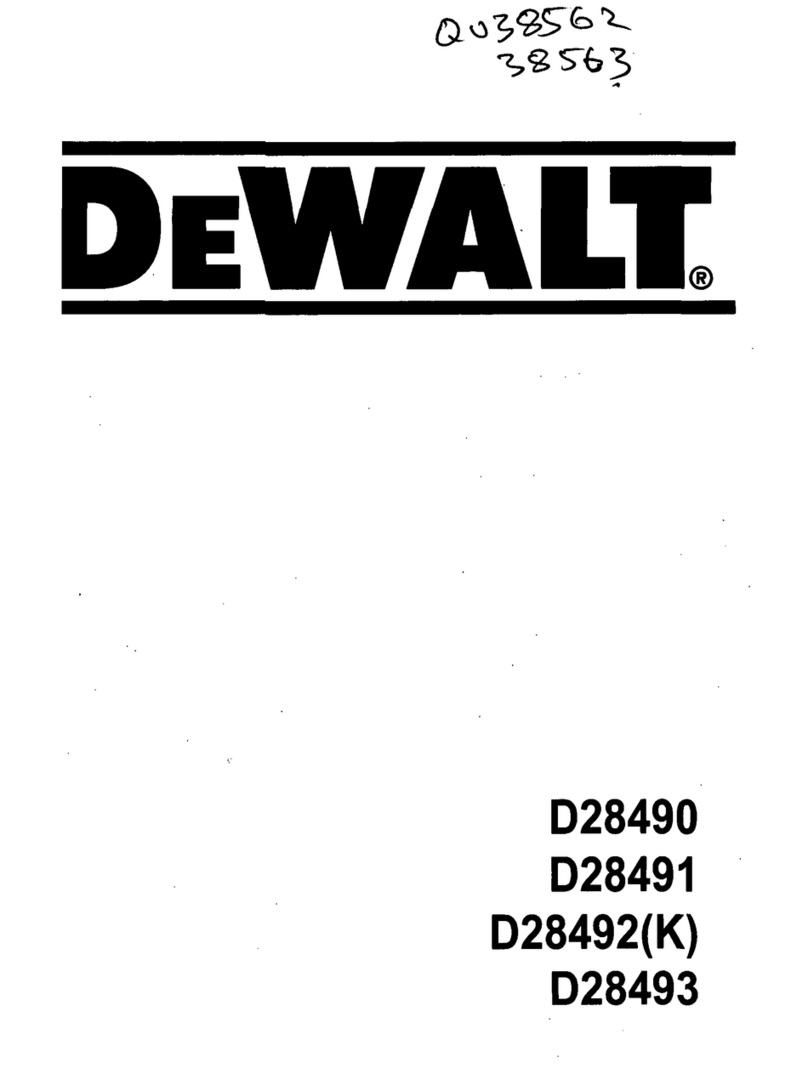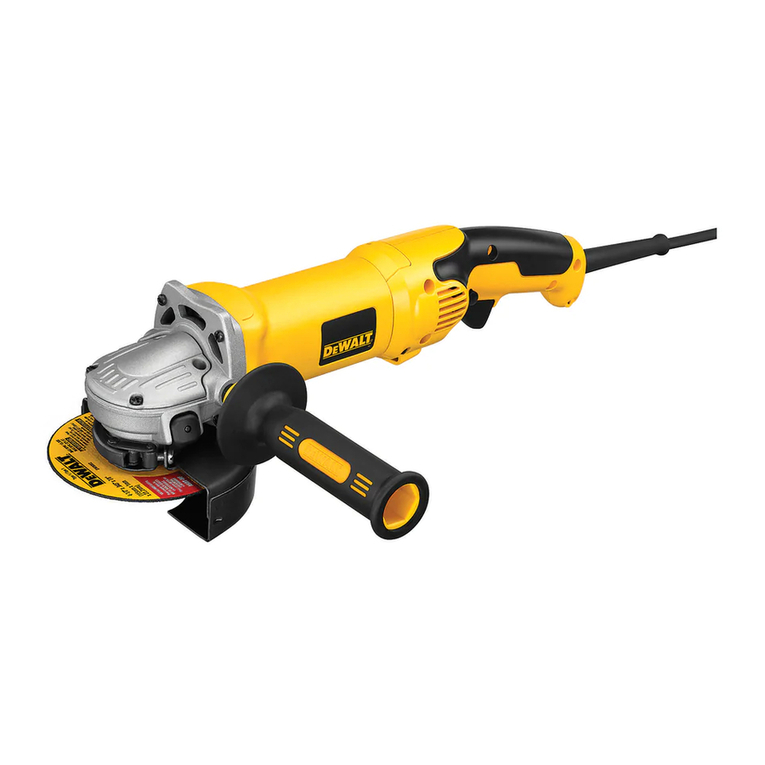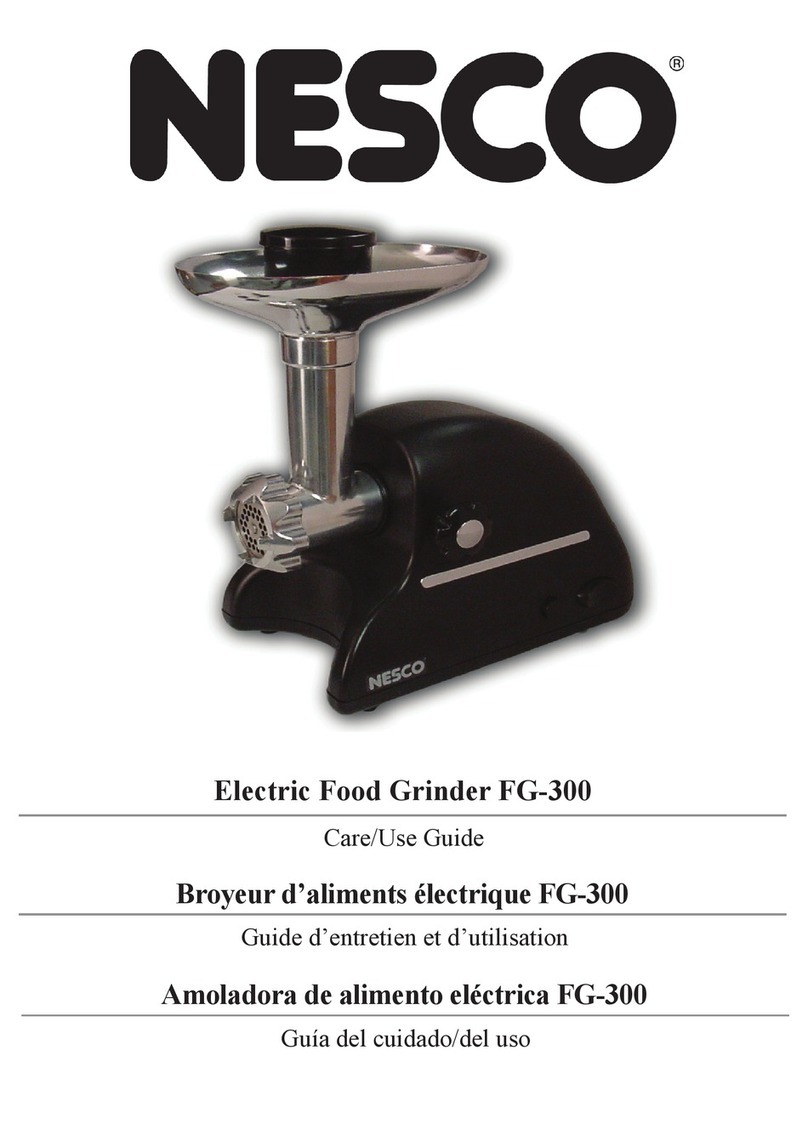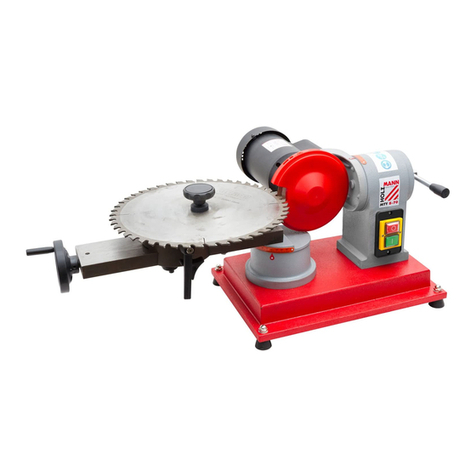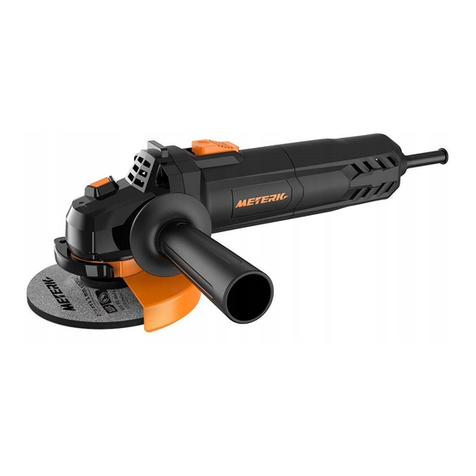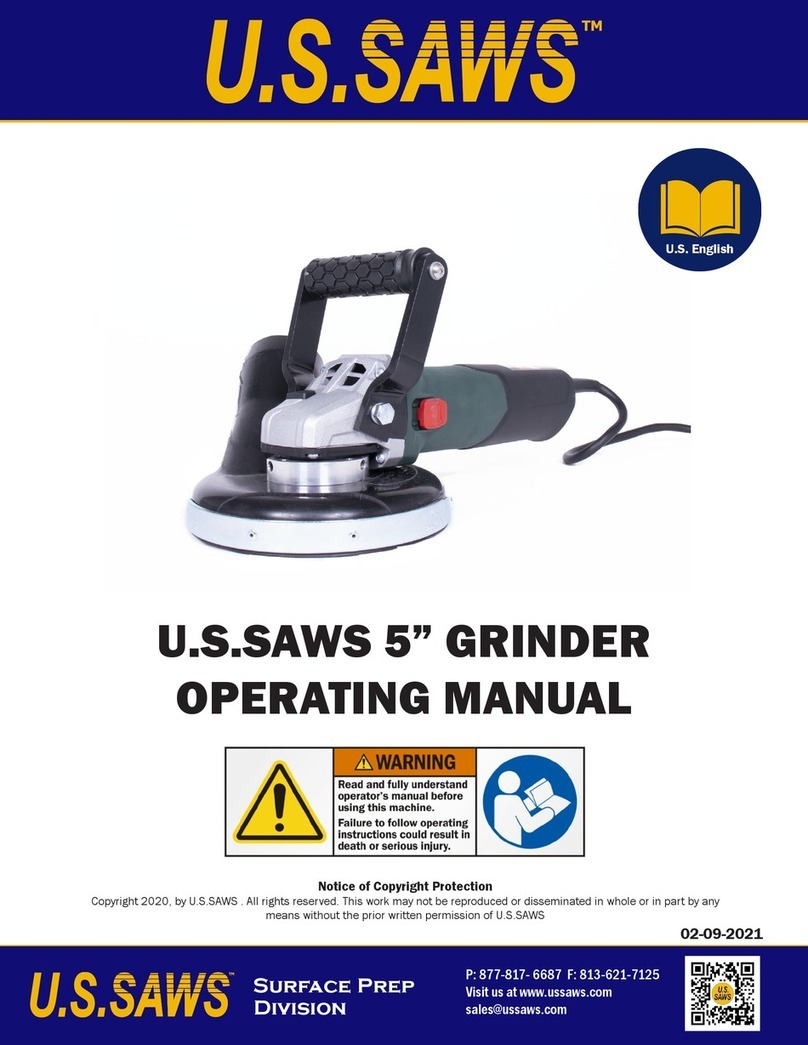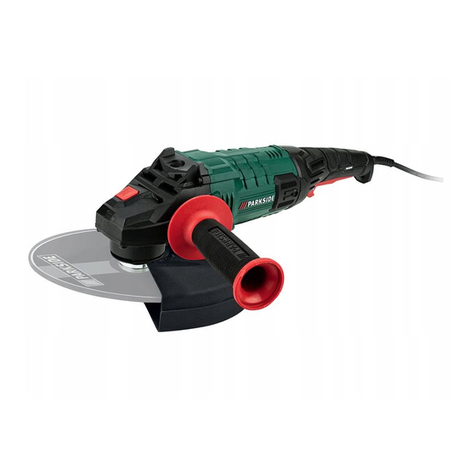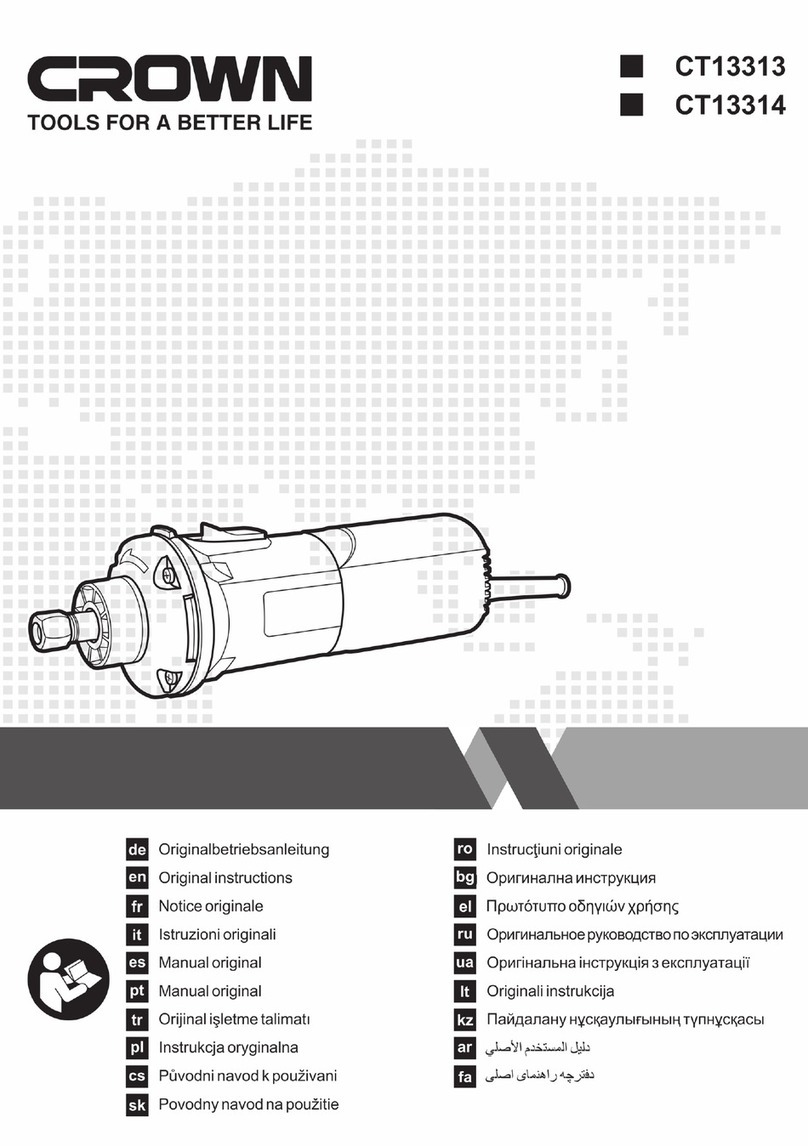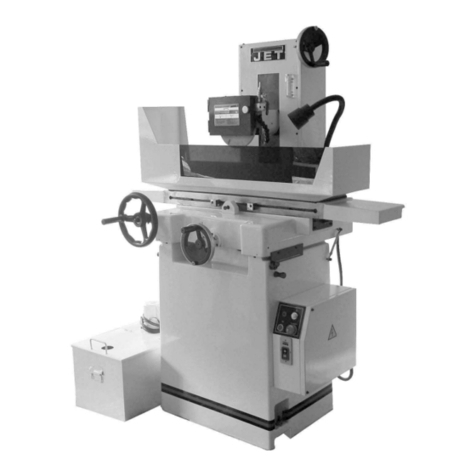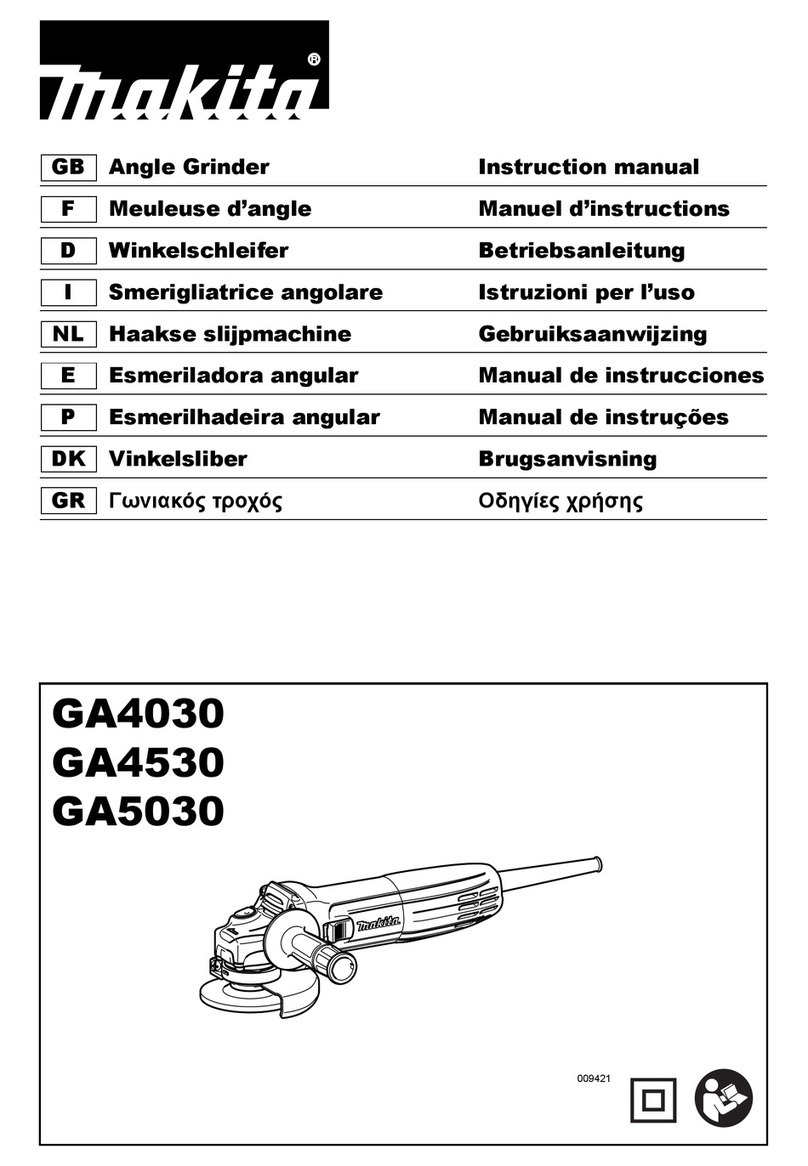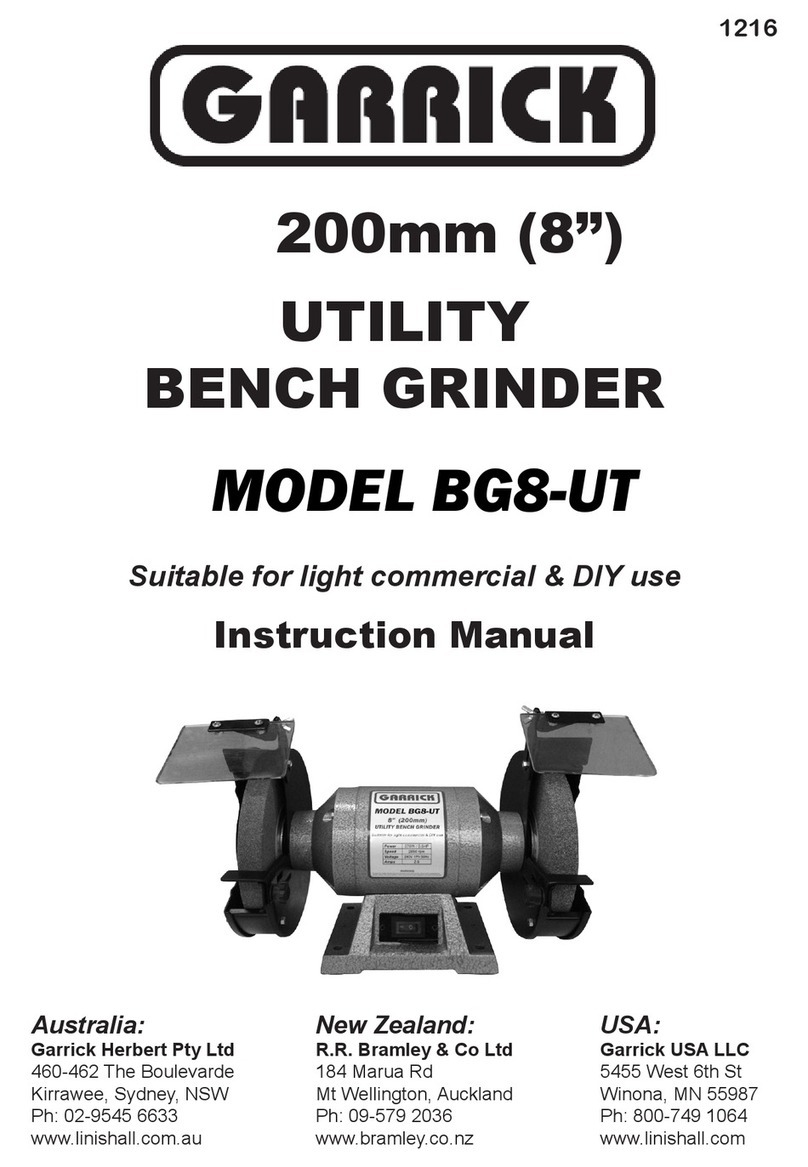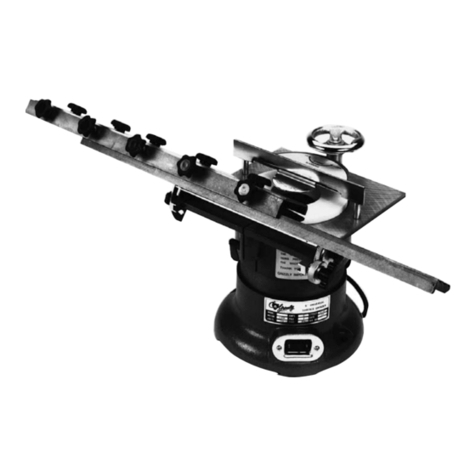
6
ENGLISH
q) Do not run the power tool while carrying it at
your side. Accidental contact with the spinning
accessory could snag your clothing, pulling the
accessory into your body.
r) Regularly clean the power tool’s air vents.
The motor’s fan will draw the dust inside
the housing and excessive accumulation of
powdered metal may cause electrical hazards.
s) Do not operate the power tool near
flammable materials. Sparks could ignite these
materials.
t) Do not use accessories that require liquid
coolants. Using water or other liquid coolants
may result in electrocution or shock.
FURTHER SAFETY INSTRUCTIONS
FOR ALL OPERATIONS
Causes and Operator Prevention
of Kickback
Kickback is a sudden reaction to a pinched or
snagged rotating wheel, backing pad, brush or
any other accessory. Pinching or snagging causes
rapid stalling of the rotating accessory which in turn
causes the uncontrolled power tool to be forced in
the direction opposite of the accessory’s rotation at
the point of the binding.
For example, if an abrasive wheel is snagged or
pinched by the workpiece, the edge of the wheel
that is entering into the pinch point can dig into the
surface of the material causing the wheel to climb
out or kick out. The wheel may either jump toward
or away from the operator, depending on direction
of the wheel’s movement at the point of pinching.
Abrasive wheels may also break under these
conditions.
Kickback is the result of tool misuse and/or incorrect
operating procedures or conditions and can be
avoided by taking proper precautions as given
below:
a) Maintain a firm grip on the power tool and
position your body and arm to allow you to
resist kickback forces. Always use auxiliary
handle, if provided, for maximum control
over kickback or torque reaction during start
up. The operator can control torque reaction or
kickback forces, if proper precautions are taken.
b) Use special care when working corners,
sharp edges etc. Avoid bouncing and
snagging the accessory. Corners, sharp
edges or bouncing have a tendency to snag the
the power tool at maximum no-load speed
for one minute. Damaged accessories will
normally break apart during this test time.
i) Wear personal protective equipment.
Depending on application, use face
shield, safety goggles or safety glasses.
As appropriate, wear dust mask, hearing
protectors, gloves and workshop apron
capable of stopping small abrasive or
workpiece fragments. The eye protection must
be capable of stopping flying debris generated
by various operations. The dust mask or
respirator must be capable of filtrating particles
generated by your operation. Prolonged
exposure to high intensity noise may cause
hearing loss.
j) Keep bystanders a safe distance away from
work area. Anyone entering the work area
must wear personal protective equipment.
Fragments of workpiece or of a broken
accessory may fly away and cause injury
beyond immediate area of operation.
k) Hold power tool by insulated gripping
surfaces only, when performing an operation
where the cutting accessory may contact
hidden wiring or its own cord. Cutting
accessory contacting a “live” wire may make
exposed metal parts of the power tool “live” and
could give the operator an electric shock.
l) Always hold the tool firmly in your hand(s)
during start up. The reaction torque of the
motor, as it accelerates to full speed, can cause
the tool to twist.
m) Use clamps to support workpiece whenever
practical. Never hold a small workpiece in
one hand and the tool in the other while in
use. Clamping a small workpiece allows you
to use your hand(s) to control the tool. Round
material such as dowel rods, pipes or tubing
have a tendency to roll while being cut, and
may cause the bit to bind or jump toward you.
n) Position the cord clear of the spinning
accessory. If you lose control, the cord may be
cut or snagged and your hand or arm may be
pulled into the spinning accessory.
o) Never lay the power tool down until the
accessory has come to a complete stop. The
spinning accessory may grab the surface and
pull the power tool out of your control.
p) After changing bits or making any
adjustments, make sure the collet nut, chuck
or any other adjustment devices are securely
tightened. Loose adjustment devices can
unexpectedly shift, causing loss of control, loose
rotation components will be violently thrown.
